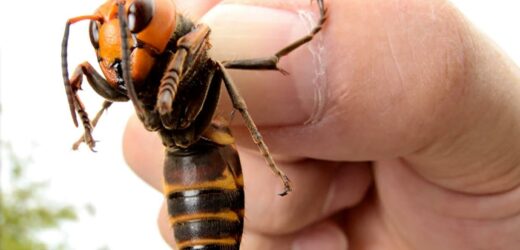A GIANT hornet capable of killing humans and wiping out entire beehives was discovered north of Seattle on Wednesday, causing major concerns for authorities.
It was the first sighting of the dangerous "murder hornet" in North America this year and has prompted scientists to act quickly to stop the deadly insect getting a foothold on the continent.
This special species of wasp originates from Asia and is capable of knocking out local populations of honeybees that pollinate crops while its sting is known to be fatal to humans.
A resident found the dead hornet on his lawn in Snohomish County on June 4 and reported it immediately to agriculture officials, who say the dried-out pest appeared to be from a previous season.
"The find is perplexing because it is too early for a male to emerge,” said Dr Osama El-Lissy, deputy administrator for the US Department of Agriculture’s quarantine program.
Scientists have warned for months that the killer species poses a massive public health threat.
Asian Giant Hornets can use their sharp jaws to tear through human skin, one expert has said.
Dr. Samuel Ramsey has been "sounding the alarm about this insect for months".
"It is a very large insect. About the size of your thumb. It has these very sharp, large mandibles that are attached to these really big muscles that allow it to chew through a lot of different fabrics," he told WUSA.
"They can chew through skin, and they also have a really long stinger," he described.
Murder Hornets' poisonous venom can destroy human cells and sends signals of constant pain to human nerves.
The deadly insects have been known to kill up to 50 people a year in its native country Japan, Ramsey said.
Meanwhile, the NYPD's Bee Unit is preparing for a possible Murder Hornet invasion on the East Coast as they prey on honey bees, an endangered population.
The US Department of Agriculture has said that the hornets could still gain foothold in the mainland US, so officials are now scrambling to save the bees.
Many experts have advised people to leave the hornets alone if they spot them.
Hundreds of the species were found in Canada and south of the border in Washington in 2019 and 2020.
Officials say the latest specimen is unrelated to insects found over the last two years.
“We’ll now be setting traps in the area and encouraging citizen scientists to trap in Snohomish and King counties,” said Sven Spichiger, an entomologist with the state Agriculture Department.
“None of this would have happened without an alert resident taking the time to snap a photo and submit a report.”
Source: Read Full Article







